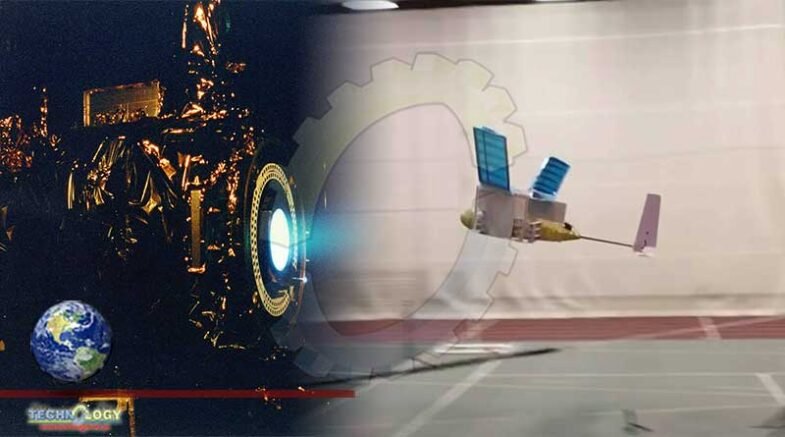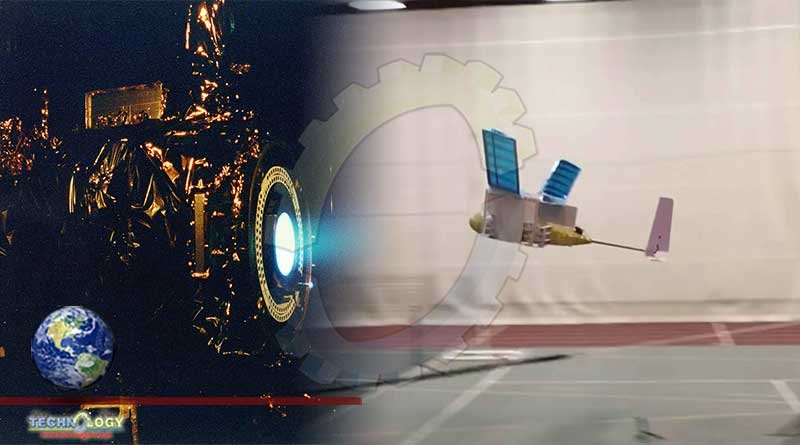A team of researchers says that it created a model plane that uses an “ion drive” propulsion system rather than traditional fuel.

If there’s one thing science fiction films and TV shows have taught us about the future of air travel it’s that planes burning fossil fuels will eventually be relics of the past. That’s probably a good thing, as fossil fuels aren’t great for the environment, but what could possibly replace them?
We’ve already seen electric planes that use battery power to spin propellers, but that’s pretty old-school, at least compared to what a team of scientists from the Massachusetts Institute of Technology has built. In a paper published in Nature, the researchers describe how they conceptualized and then built a small-scale version of a plane that uses an ion propulsion drive to allow for movement without any moving parts.
So what exactly is an ion drive and how did MIT scientists manage to make a plane fly without fuel or propellers? It’s actually a fairly simple concept, though figuring out how to execute it took some time.
When air is ionized it is given an electrical charge. Because charged air particles are drawn to whatever the opposite charge is, be it positive or negative, it’s possible for a system to actually move air over a wing with nothing more than an electrical charge and cleverly-placed wires carrying either a positive or negative charge measuring 20,000 volts.
The electric field that is created causes the air to move swiftly over the wings in the same manner that it would if the plane were being pushed along by jet engines or pulled by propellers. The result is a silent electrical propulsion system that should, in theory, be incredibly reliable.
The research, construction, and testing of the plane were actually conducted a couple of years back but is worth revisiting for the simple fact that the airline industry is in a big of a pickle at the moment. Struggling for years with decreasing numbers of air travelers, the coronavirus pandemic has really put every airline in serious financial distress.
Airlines have been focused largely on creature comforts when it comes to picking up new aircraft from the likes of manufacturers such as Boeing. Their bread and butter, of course, is still decades-old jets making regular trips back and forth across the United States and the world, burning heaps of fuel as ferry travelers paying rock-bottom rates.
I’m not necessarily saying that investing in new technology like this would magically turn things around for airlines, but if this is indeed the future of air travel, it being incredibly quiet and presumably efficient could be something for these companies to look into on a long-term basis.
Originally published at BGR
